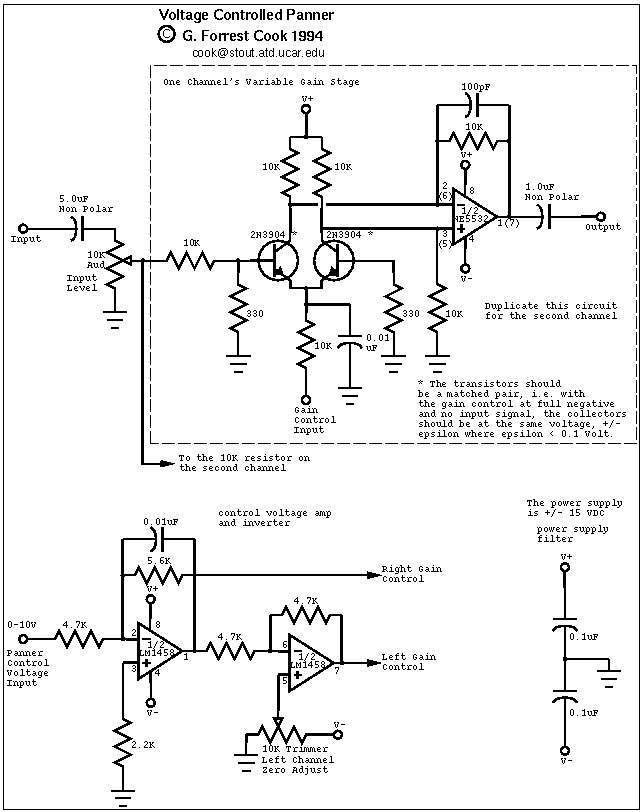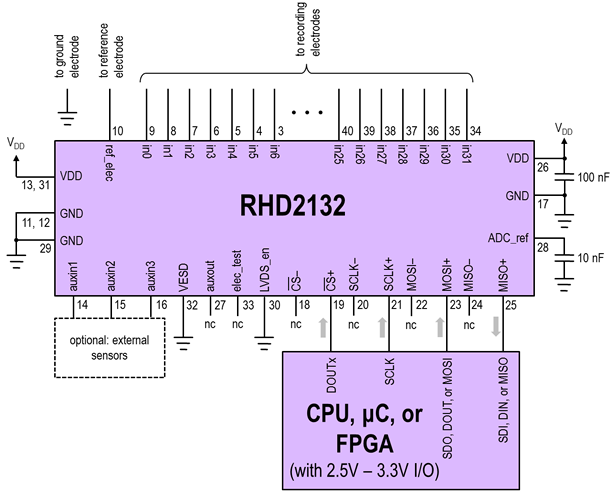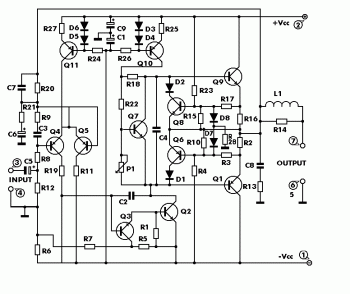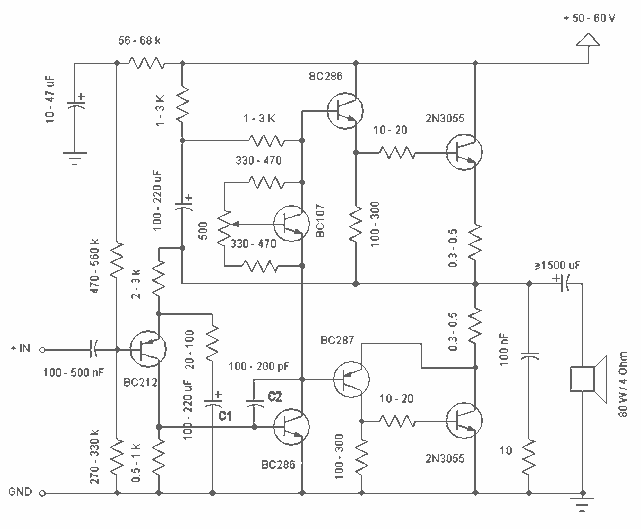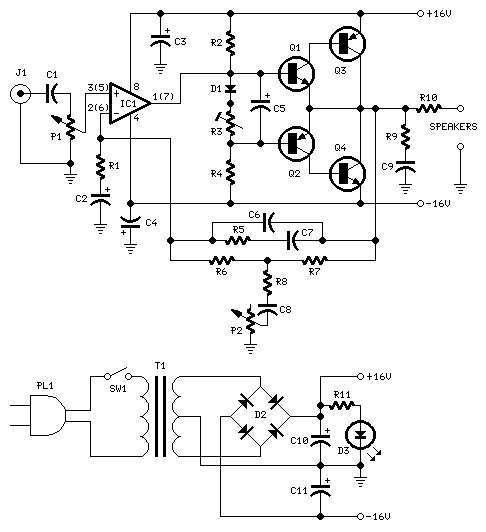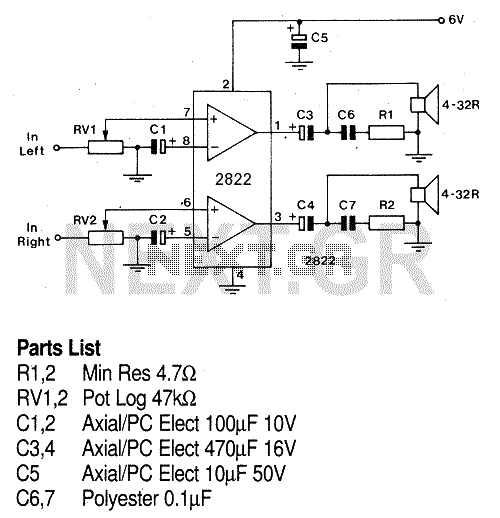
2x60 Watt Stereo Audio Amplifier LM4780
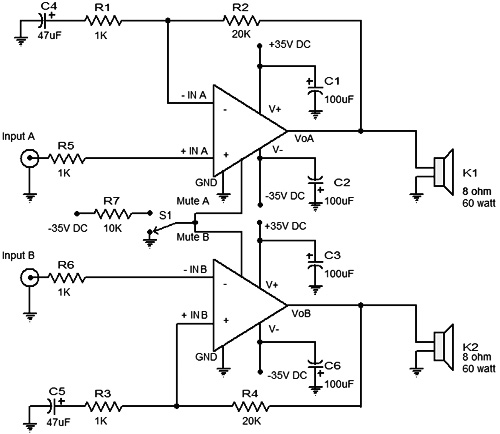
What is so special? First of all, it has a very low harmonic distortion. Typically, manufacturers indicate the maximum power of their products with a harmonic content of 10%. In contrast, this chip achieves a harmonic distortion of only 0.5% at the maximum specified power. Thus, it is the most reliable of all components encountered. The chip implements two identical amplifier channels, and specifications are provided for the stereo mode of the amplifier. The circuit can also operate in mono mode using bridge configuration. In this case, the output power at a harmonic distortion of 0.5% is 120 watts. Other features remain virtually unchanged.
This chip represents a significant advancement in amplifier technology, primarily due to its exceptionally low harmonic distortion, which is crucial for maintaining audio fidelity. The typical harmonic distortion level for many amplifiers is around 10%, which can adversely affect sound quality by introducing unwanted harmonics. However, this chip's performance at 0.5% sets a new standard, making it suitable for high-fidelity audio applications where clarity and precision are paramount.
The design incorporates two identical amplifier channels, allowing for effective stereo operation. Each channel is engineered to deliver consistent performance, ensuring that the audio output remains balanced and true to the original source material. The ability to operate in mono mode via a bridge configuration is an added advantage, enabling users to achieve higher output power levels. In this configuration, the amplifier can deliver up to 120 watts while maintaining the low harmonic distortion characteristic of the chip.
The circuit's architecture is optimized to ensure that other performance features, such as frequency response and signal-to-noise ratio, remain consistent regardless of the operational mode. This makes the chip versatile for various audio applications, from home audio systems to professional sound reinforcement setups. Overall, the design emphasizes reliability and performance, making it a valuable component for any audio engineer or enthusiast seeking high-quality amplification solutions.What`s so special Well, first of all - a very low harmonic distortion. Usually, manufacturers indicate the maximum power of its regular ingenious handicrafts with the harmonic content of 10%. At the same chip, CT at the maximum specified power is only 0, 5%! Thus, it is the most honest of all mikruha I encountered. In the chip implements two ident ical amplifier channels and features are given for the stereo mode of the amplifier. Circuit can also operate in mono - in bridge inclusion. In this case, the output power at CT = 0. 5% of 120 watts. Other features remain virtually unchanged. 🔗 External reference
This chip represents a significant advancement in amplifier technology, primarily due to its exceptionally low harmonic distortion, which is crucial for maintaining audio fidelity. The typical harmonic distortion level for many amplifiers is around 10%, which can adversely affect sound quality by introducing unwanted harmonics. However, this chip's performance at 0.5% sets a new standard, making it suitable for high-fidelity audio applications where clarity and precision are paramount.
The design incorporates two identical amplifier channels, allowing for effective stereo operation. Each channel is engineered to deliver consistent performance, ensuring that the audio output remains balanced and true to the original source material. The ability to operate in mono mode via a bridge configuration is an added advantage, enabling users to achieve higher output power levels. In this configuration, the amplifier can deliver up to 120 watts while maintaining the low harmonic distortion characteristic of the chip.
The circuit's architecture is optimized to ensure that other performance features, such as frequency response and signal-to-noise ratio, remain consistent regardless of the operational mode. This makes the chip versatile for various audio applications, from home audio systems to professional sound reinforcement setups. Overall, the design emphasizes reliability and performance, making it a valuable component for any audio engineer or enthusiast seeking high-quality amplification solutions.What`s so special Well, first of all - a very low harmonic distortion. Usually, manufacturers indicate the maximum power of its regular ingenious handicrafts with the harmonic content of 10%. At the same chip, CT at the maximum specified power is only 0, 5%! Thus, it is the most honest of all mikruha I encountered. In the chip implements two ident ical amplifier channels and features are given for the stereo mode of the amplifier. Circuit can also operate in mono - in bridge inclusion. In this case, the output power at CT = 0. 5% of 120 watts. Other features remain virtually unchanged. 🔗 External reference
